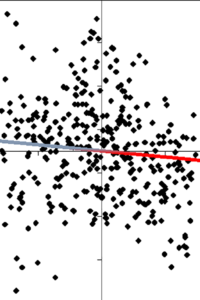Psychologist Carsten de Dreu and economist Mathijs van Dijk met at NIAS and have now written a truly interdisciplinary article together. “Climatic Shocks Associate with Innovation in Science and Technology” is published in PLOS One in January 2018.
About the Collaboration
Mathijs van Dijk (Professor of finance at Rotterdam School of Management, Erasmus University) spent the academic year 2015/16 at NIAS, working on the social value of finance. He teamed up with Carsten de Dreu (Professor of Psychology at Leiden University and Behavioral Economics at the University of Amsterdam), who carried out a research project on intergroup conflict.
Van Dijk: “Before arriving at NIAS, I had been browsing the profiles of the other fellows to assess whether there might be opportunities for cooperation. What I would never have been able to guess is that I got in touch with scholars from different fields, with little apparent overlap in research interests, expertise, or methods used, resulting in conversations that were so inspiring and horizon-broadening that they would lead to new research projects far beyond what I have been used to thinking and writing about in my academic career so far. These projects share the common theme of investigating the determinants of the socio-economic development of different societies around the world.”
The first version of the paper titled “Climatic Shocks Shape Innovation in Science and Technology” was drafted at the end of the academic year, and is now available in open access in Plos One.
About the Article
Human history is shaped by landmark discoveries in science and technology. However, across both time and space the rate of innovation is erratic: Periods of relative inertia alternate with bursts of creative science and rapid cascades of technological innovations. While the origins of the rise and fall in rates of discovery and innovation remain poorly understood, they may reflect adaptive responses to exogenously emerging threats and pressures. Here we examined this possibility by fitting annual rates of scientific discovery and technological innovation to climatic variability and its associated economic pressures and resource scarcity. In time-series data from Europe (1500–1900CE), we indeed found that rates of innovation are higher during prolonged periods of cold (versus warm) surface temperature and during the presence (versus absence) of volcanic dust veils. This negative temperature–innovation link was confirmed in annual time-series for France, Germany, and the United Kingdom (1901–1965CE). Combined, across almost 500 years and over 5,000 documented innovations and discoveries, a 0.5°C increase in temperature associates with a sizable 0.30–0.60 standard deviation decrease in innovation. Results were robust to controlling for fluctuations in population size. Furthermore, and consistent with economic theory and micro-level data on group innovation, path analyses revealed that the relation between harsher climatic conditions between 1500–1900CE and more innovation is mediated by climate-induced economic pressures and resource scarcity.
Read the full article here.

